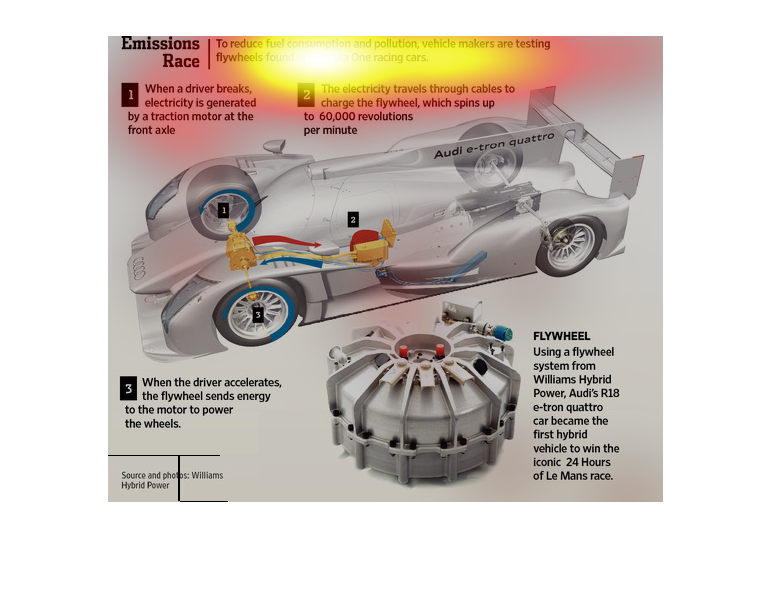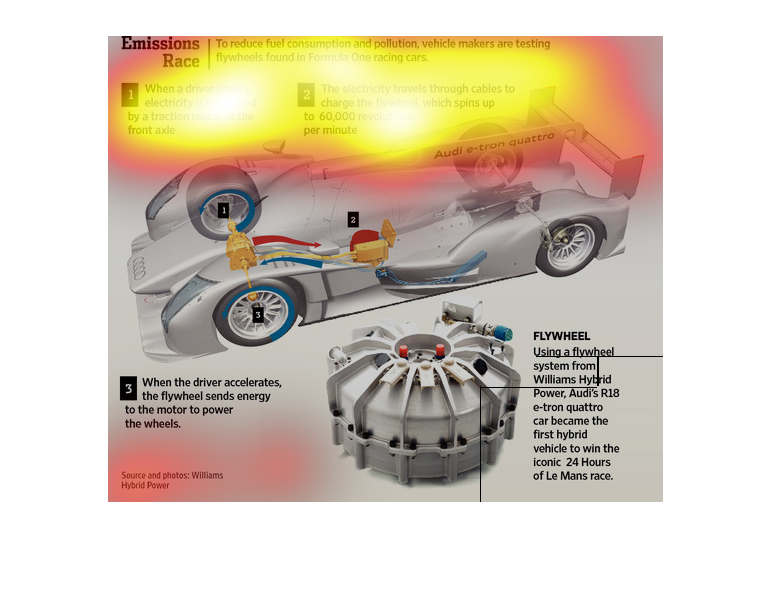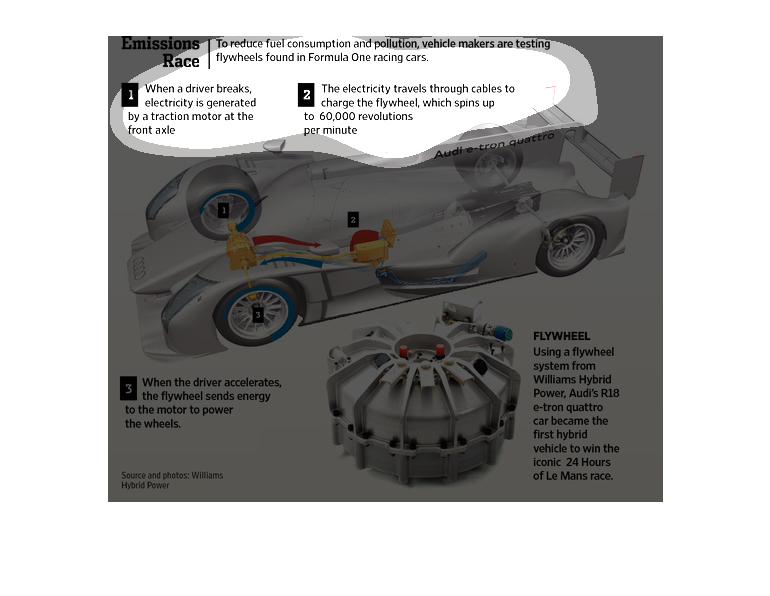
The diagram is about reducing fuel consumption and pollution through testing of flywheels
found in formula one racing cars. It displays the features of the flywheel, what makes it
important and how it works.


The graph to my left is titled emissions race. The graph to my left covers many things dealing
with emission and other things over cars and stuff like that


this graph is cool looking and the names of this graph is called emissions race and its talking
about a car abd how cool it is and how it can change in


This chart shows the emissions race to reduce fuel consumption and pollution through the use
of flywheels that are found in Formula One cars. How it works is first when the driver breaks,
electricity is generated by a traction motor at the front axel. Then the electricity travels
through cables which spins up to 60,000 revs per minute. Then during acceleration, the flywheel
sends energy to the motor to power the wheel. With these capabilities there can be a superior
hybrid.


This chart shows how flywheels found in Formula One cars can help reduce carbon emissions
in regular cars. Braking creates electricity which charges the flywheel. The flywheel can
then send energy to the engine. An Audi using a flywheel became the first hybrid to win the
Le Mans 24 hour race.


This is an exploded view diagram with details and related statistics depicting how auto manufacturers
were employing Formula One technology to reduce emissions.


The image discusses and illustrates a flywheel system used in Indy race cars to capture energy
when braking and releasing the energy when accelerating. An electric generator engages when
braking that charges an electric motor attached to the flywheel, spinning up to 60000 rpm.
Upon the car accelerating again the flywheel engages with the power train to spin the wheels
faster.


This chart describes emissions race. Specifically, to reduce fuel consumption and pollution,
vehicle makers are testing flywheels found in Formula one racing cars.


This is describing an article about how to reduce fuel consumption and pollution by using
flywheels found in race cars. It would release less pollution into the air, therefore helping
the environment.


The image depicts how vehicle makers, in an attempt to reduce pollution and fuel consumption,
are looking to flywheels found in formula one racing cars. A diagram is shown indicating the
changes to be made.


a race car and motor describing the tests being done to reduce emissions and pollutants. also
testing to improve performance and conserving fuel for Formula One cars.


This chart describes emissions race. Specifically, to reduce fuel consumption and pollution,
vehicle makers are testing flywheels found in Formula One racing cars.


The image depicts the attempts by vehicle makers to reduce fuel consumption and pollution
by testing flywheels found in formula one racing cars. The image provides a diagram of the
process and it's functions and benefits.


This chart/graph shows that motor vehicle manufactures are trying to reduce fuel consumption
and pollution by testing flywheels found in racing cars. The diagram shows the interior of
the car with the parts labeled.


This describes how flywheels in race cars work to reduce fuel consumption. They recharge when
the driver brakes. When the driver accelerates, the flywheel gives the engine energy.
































